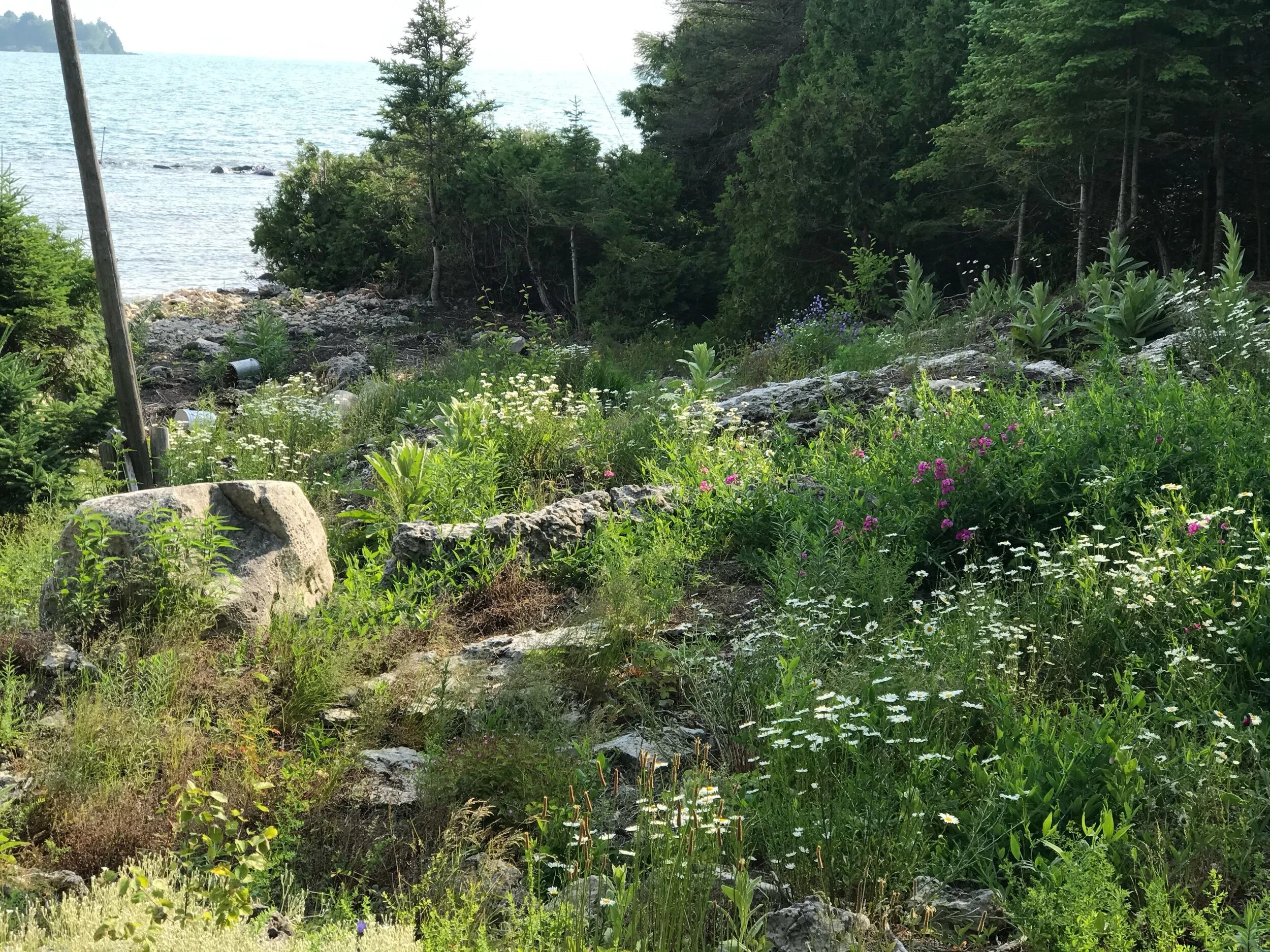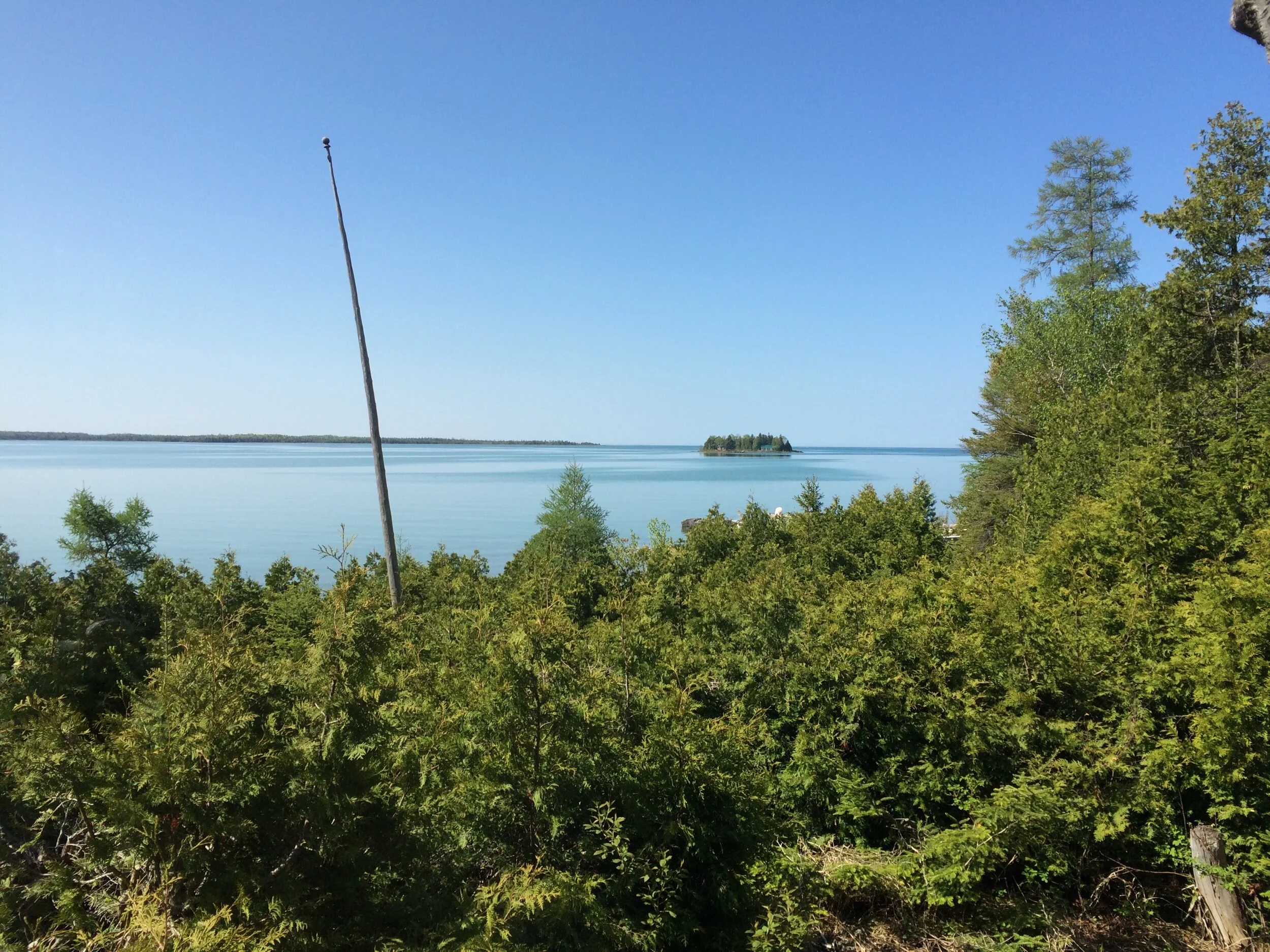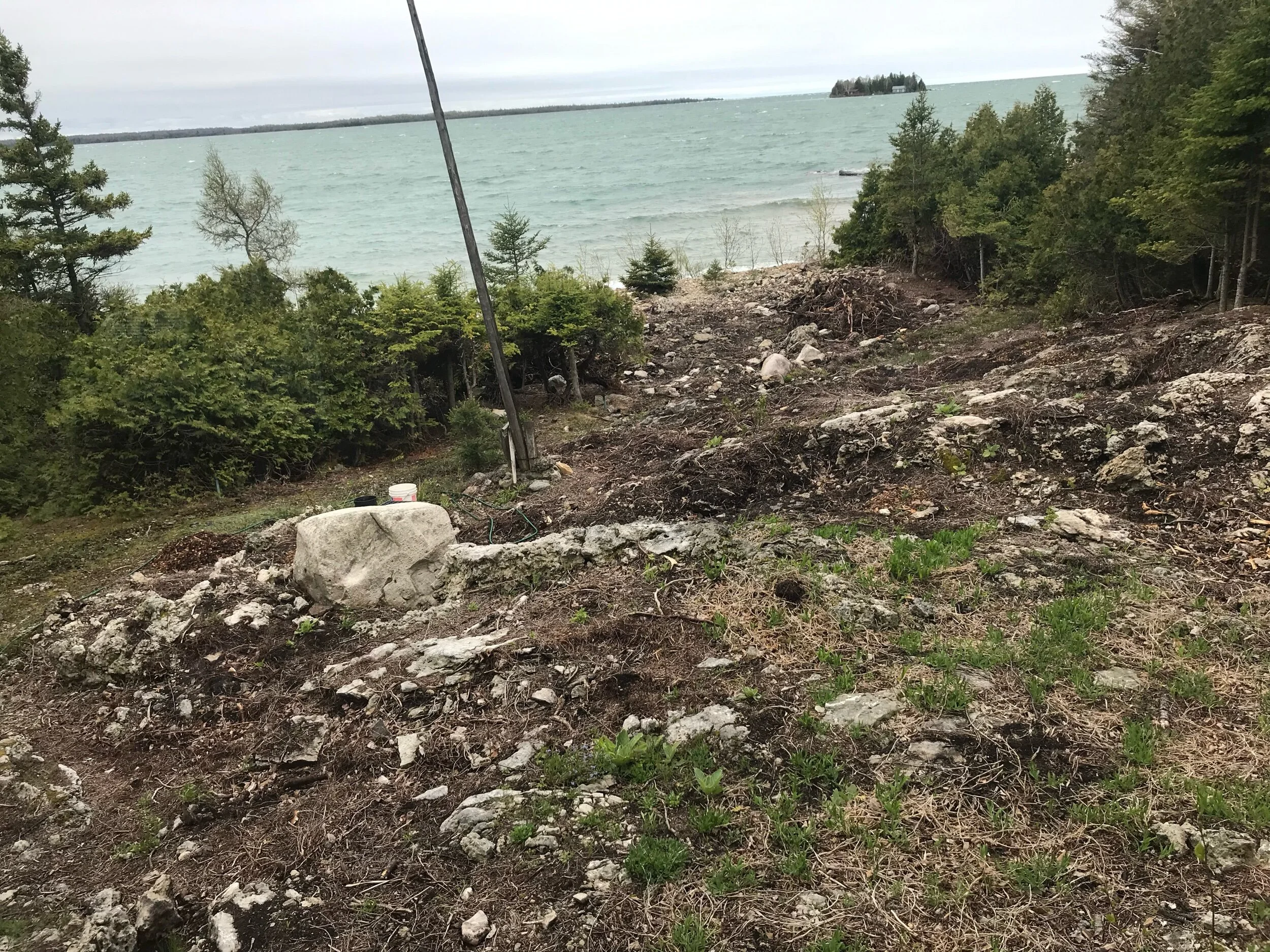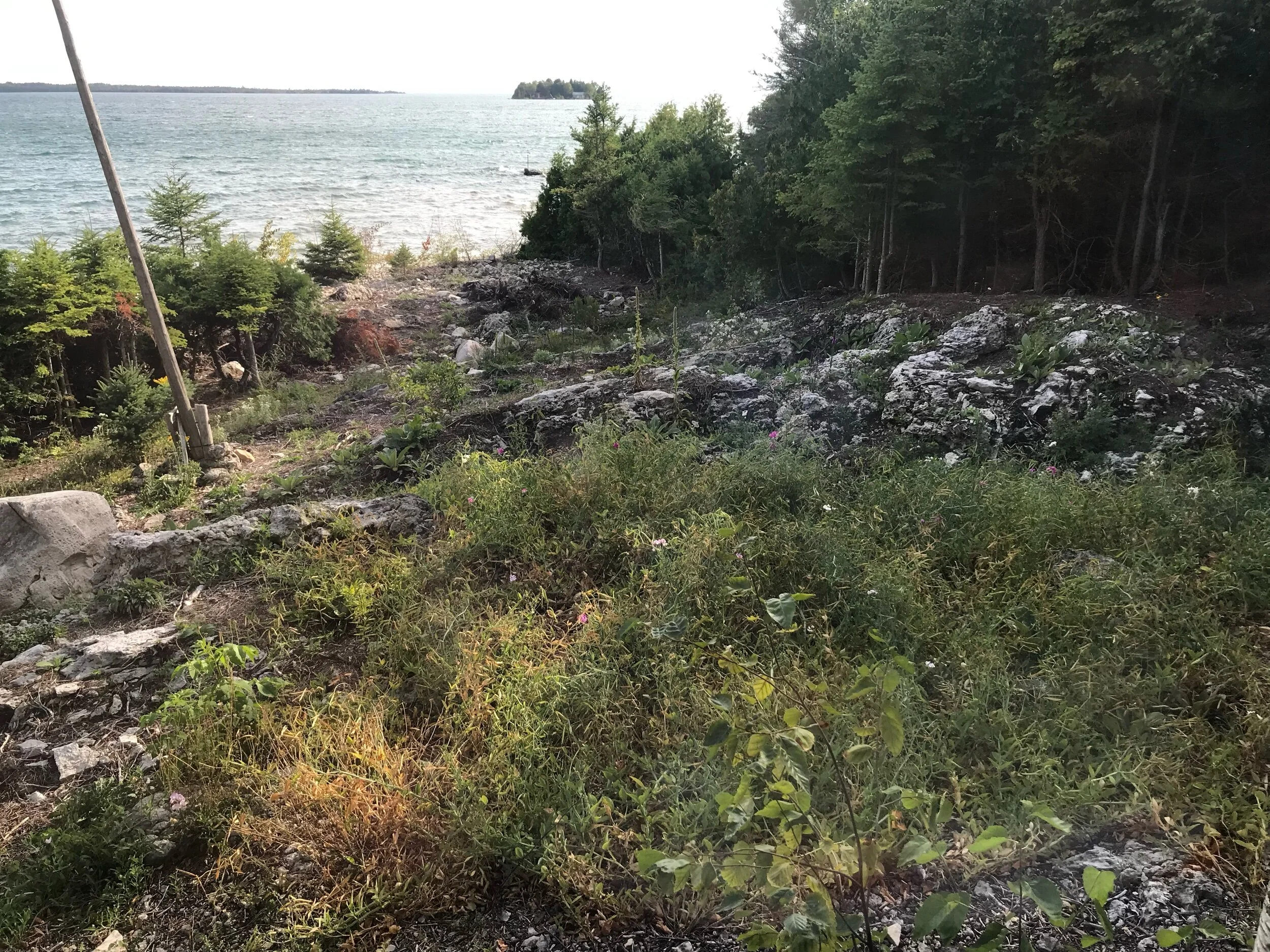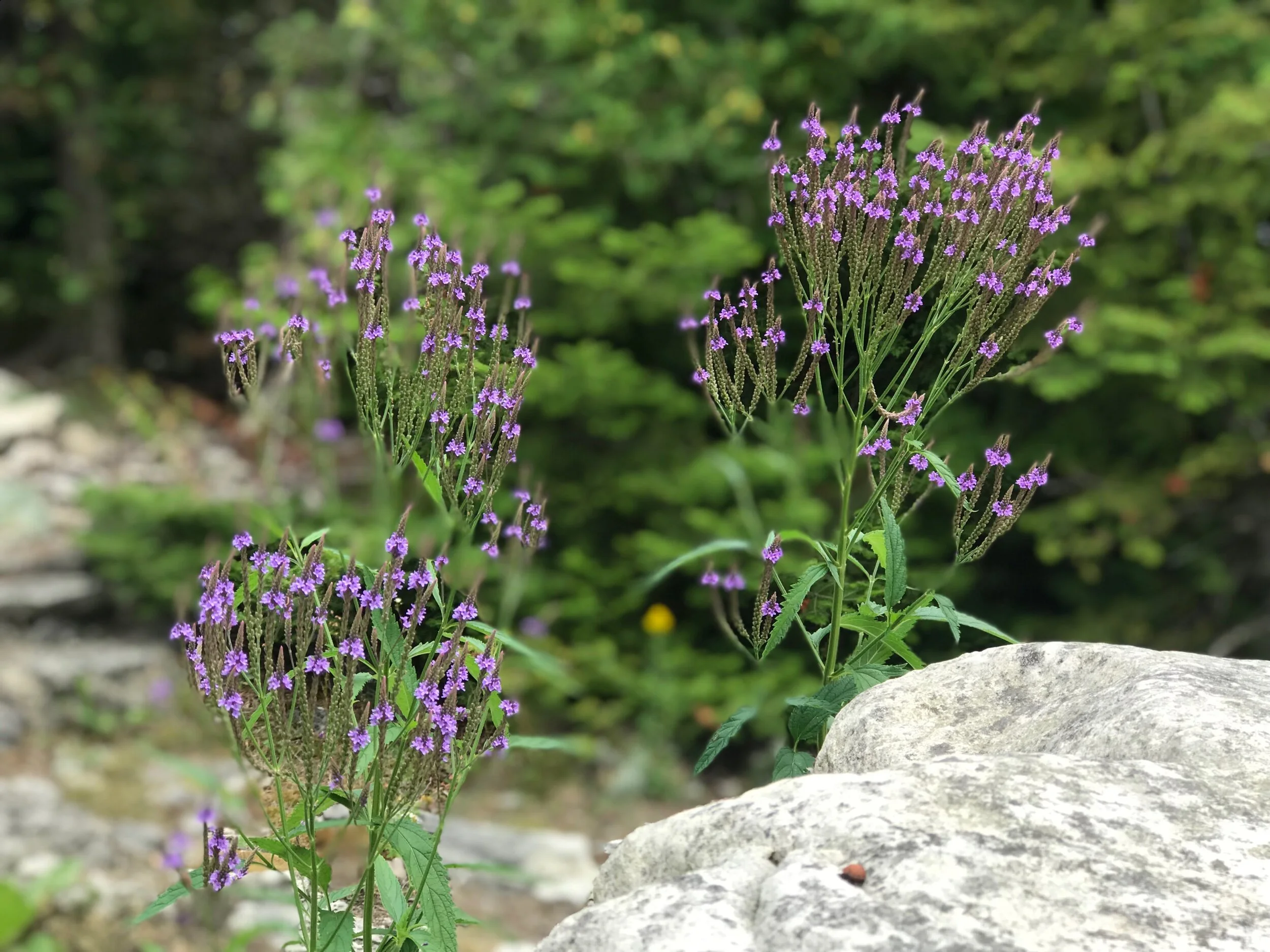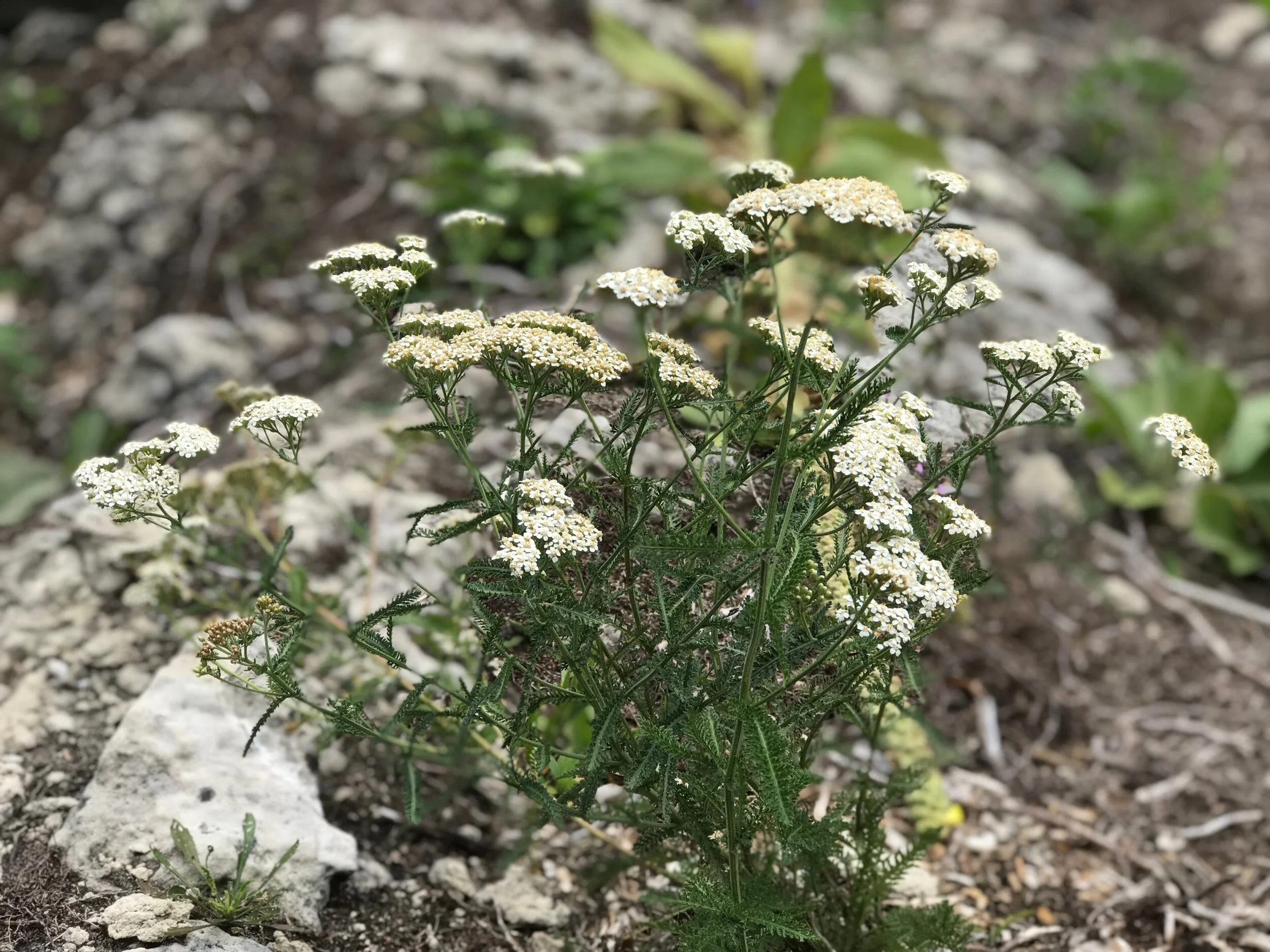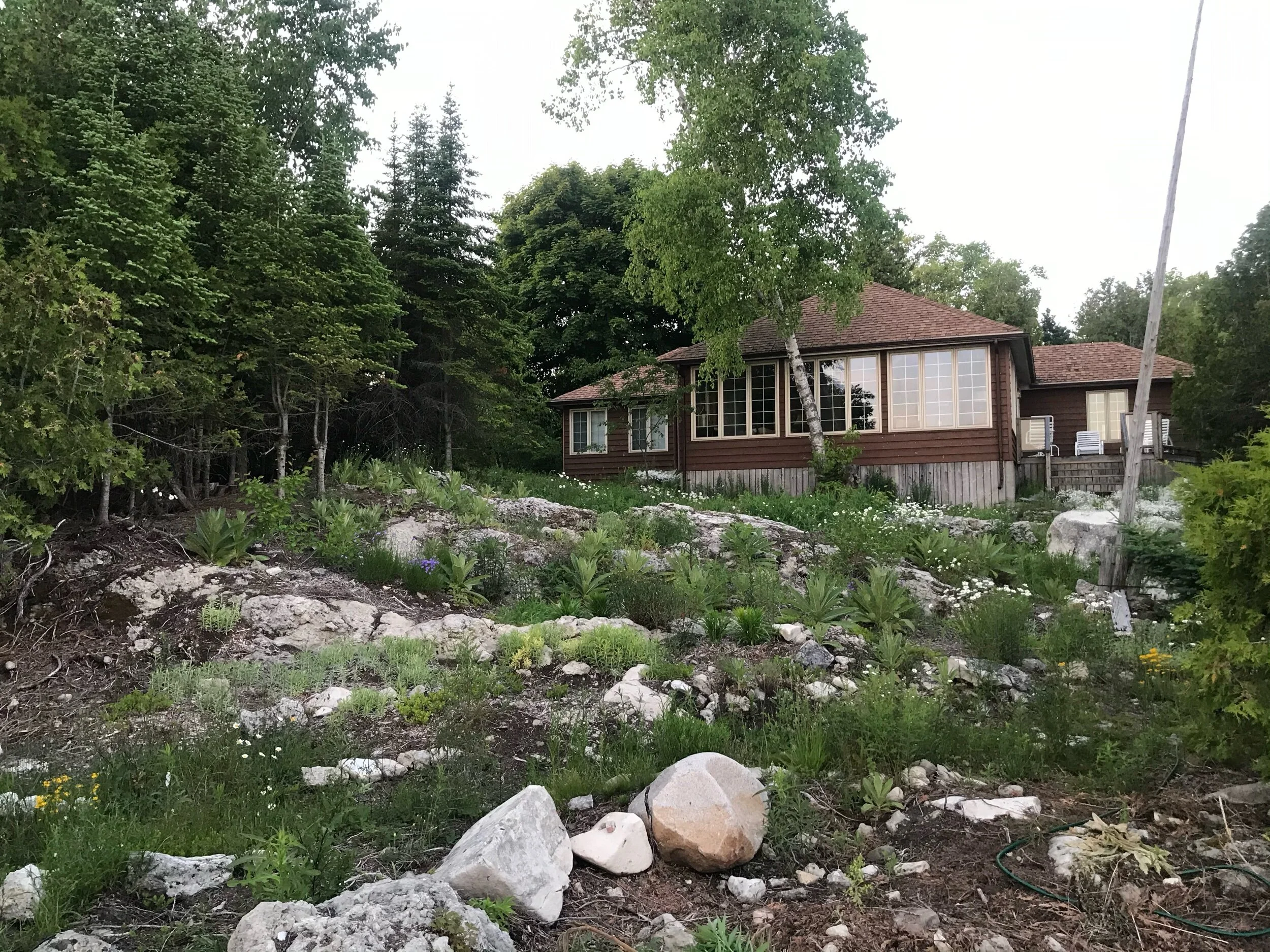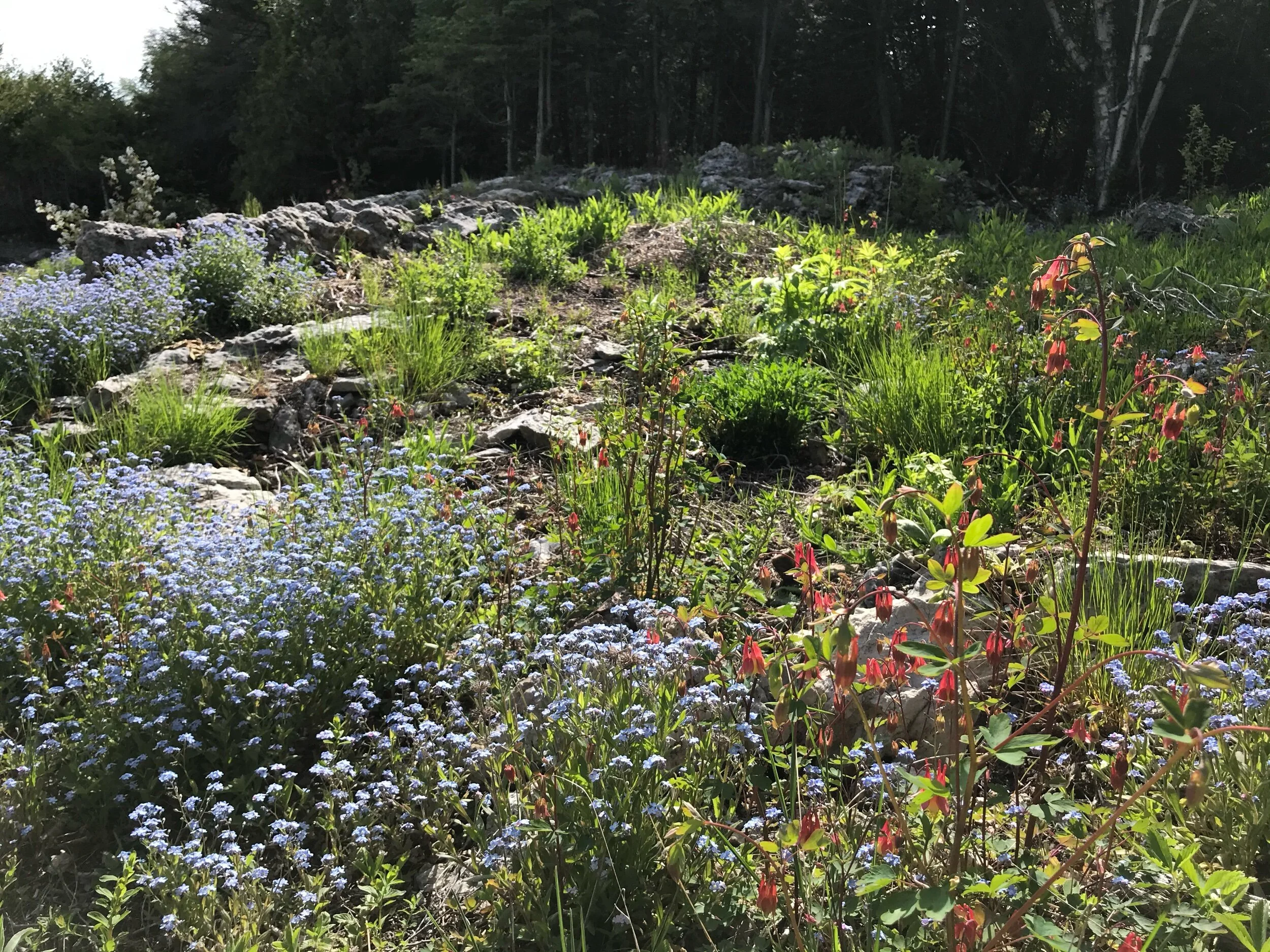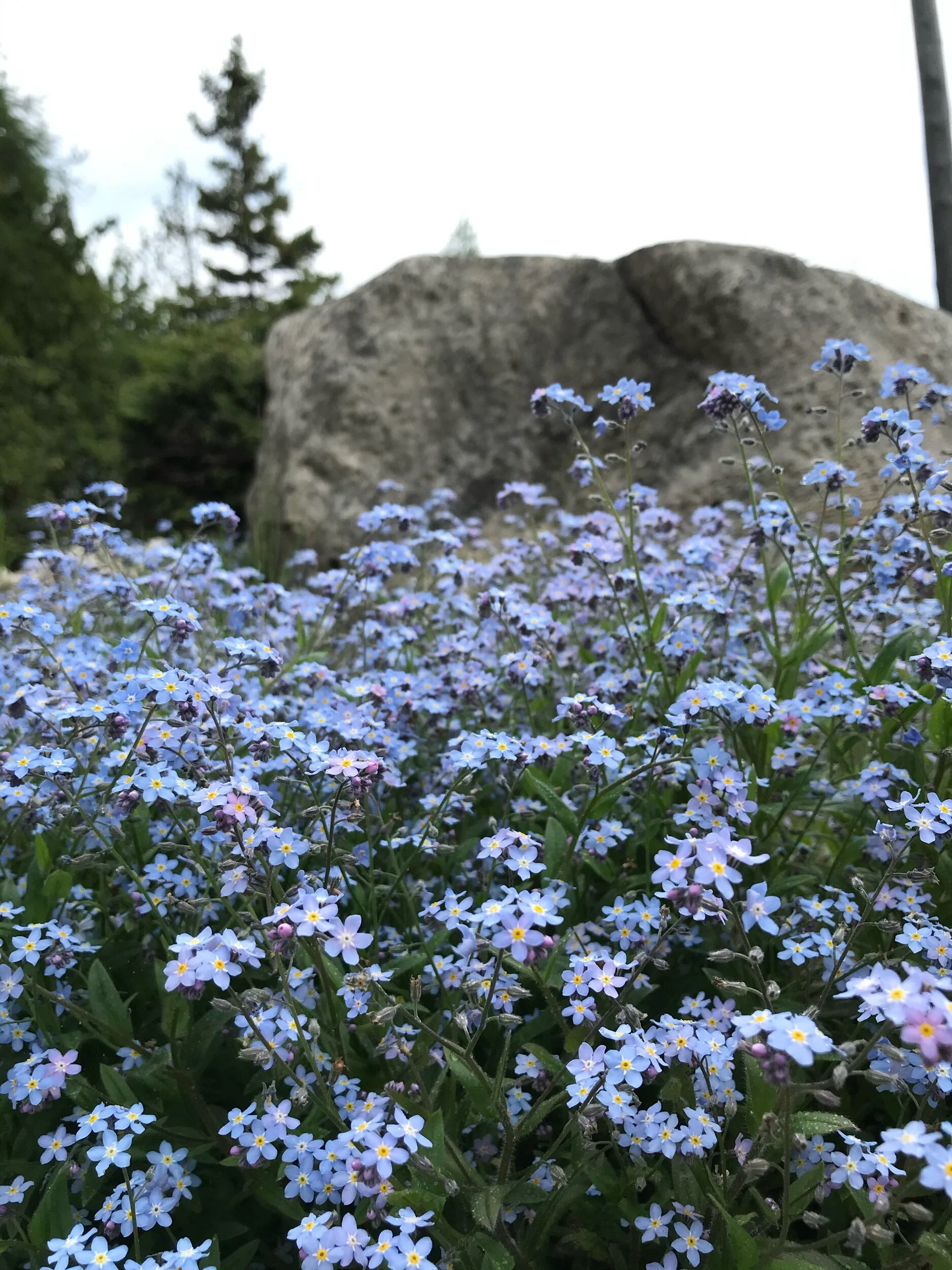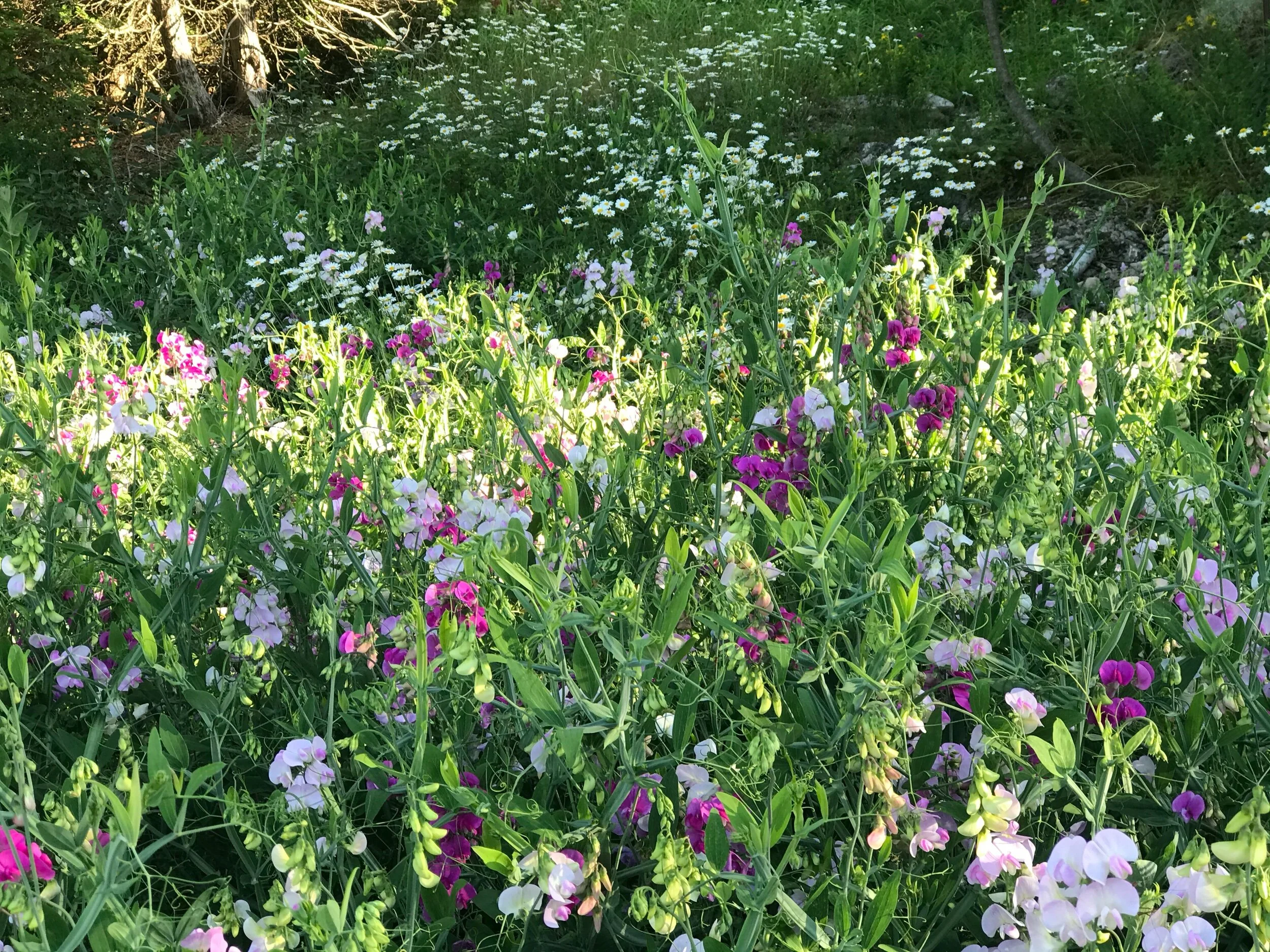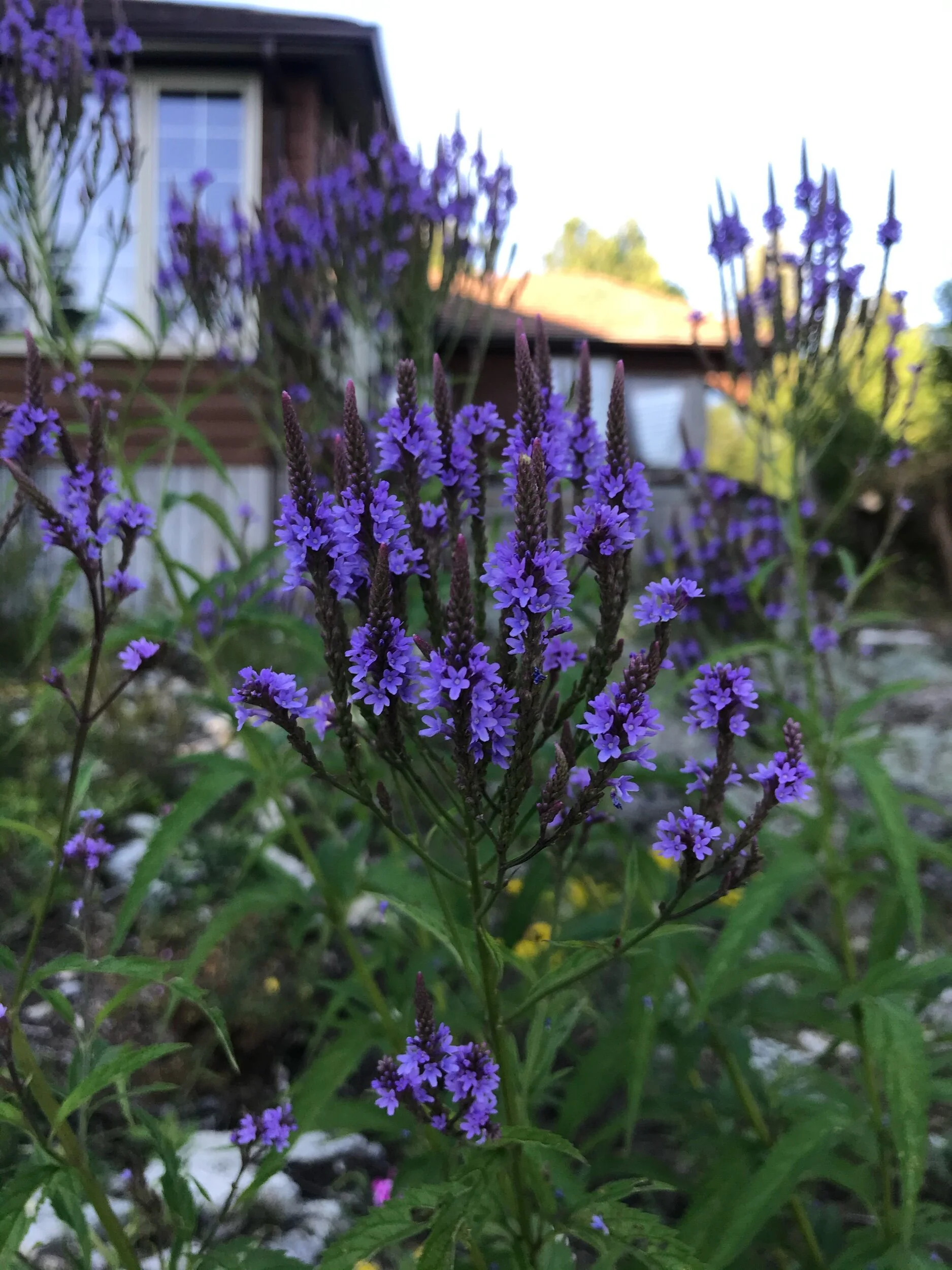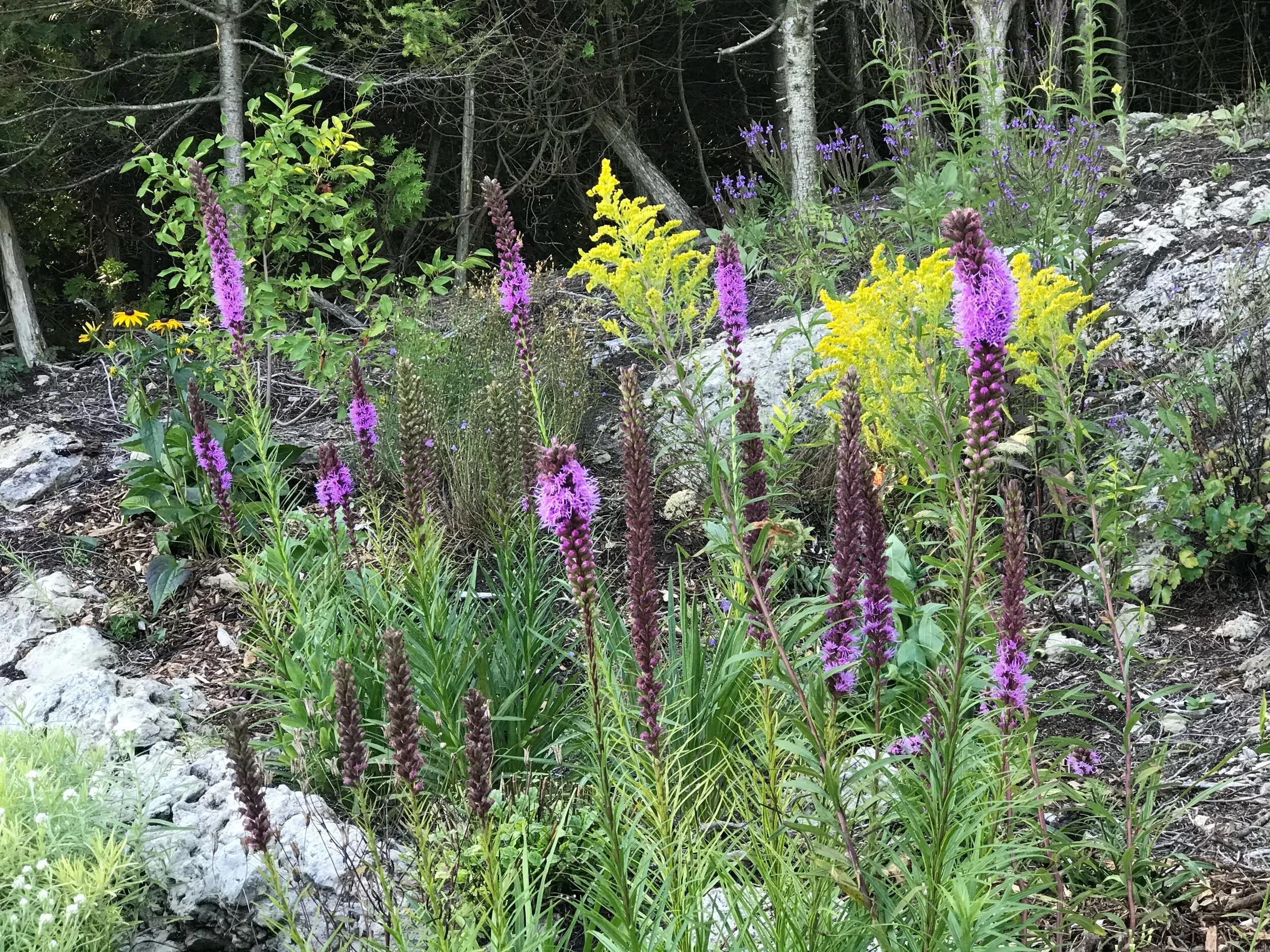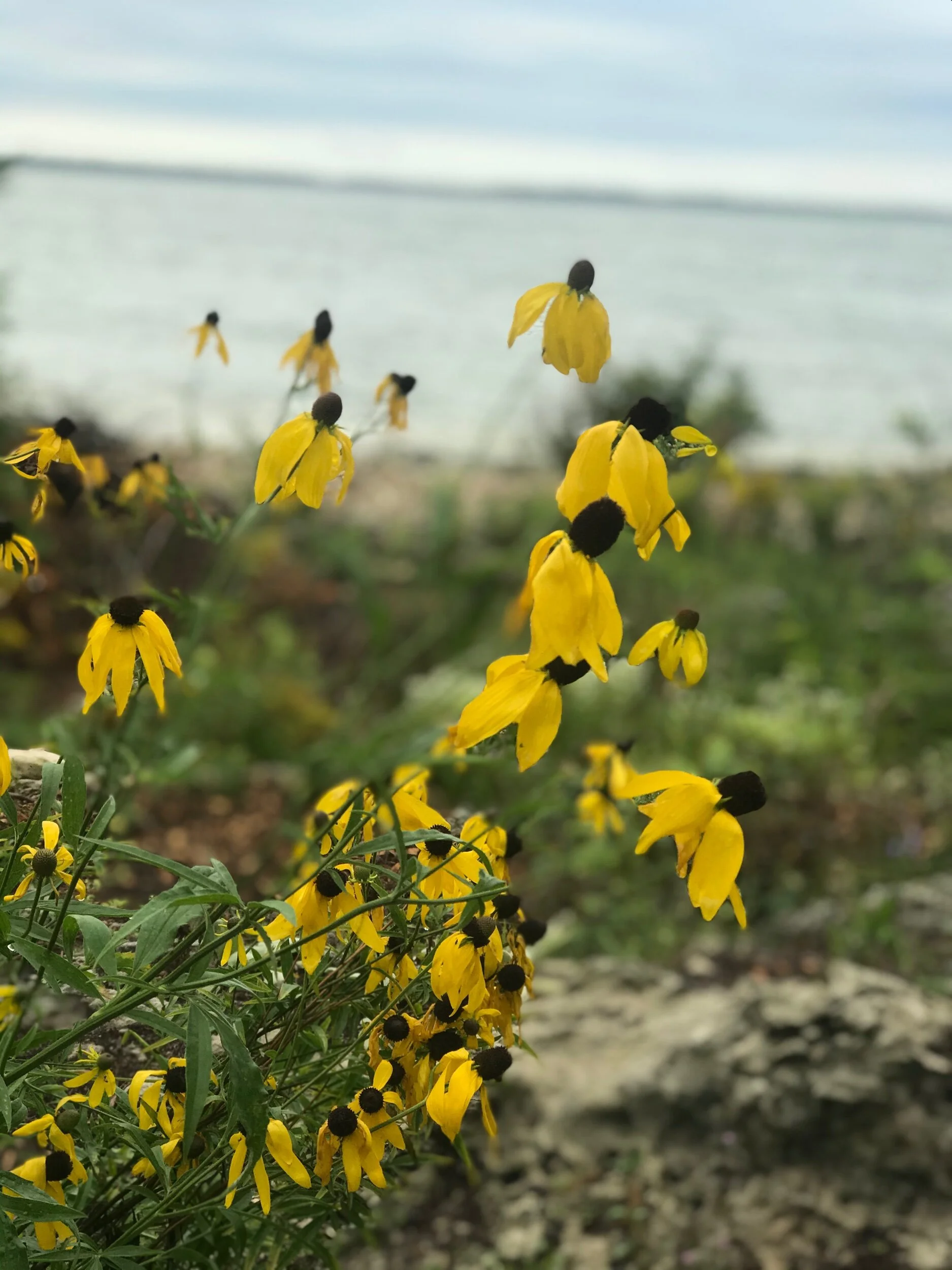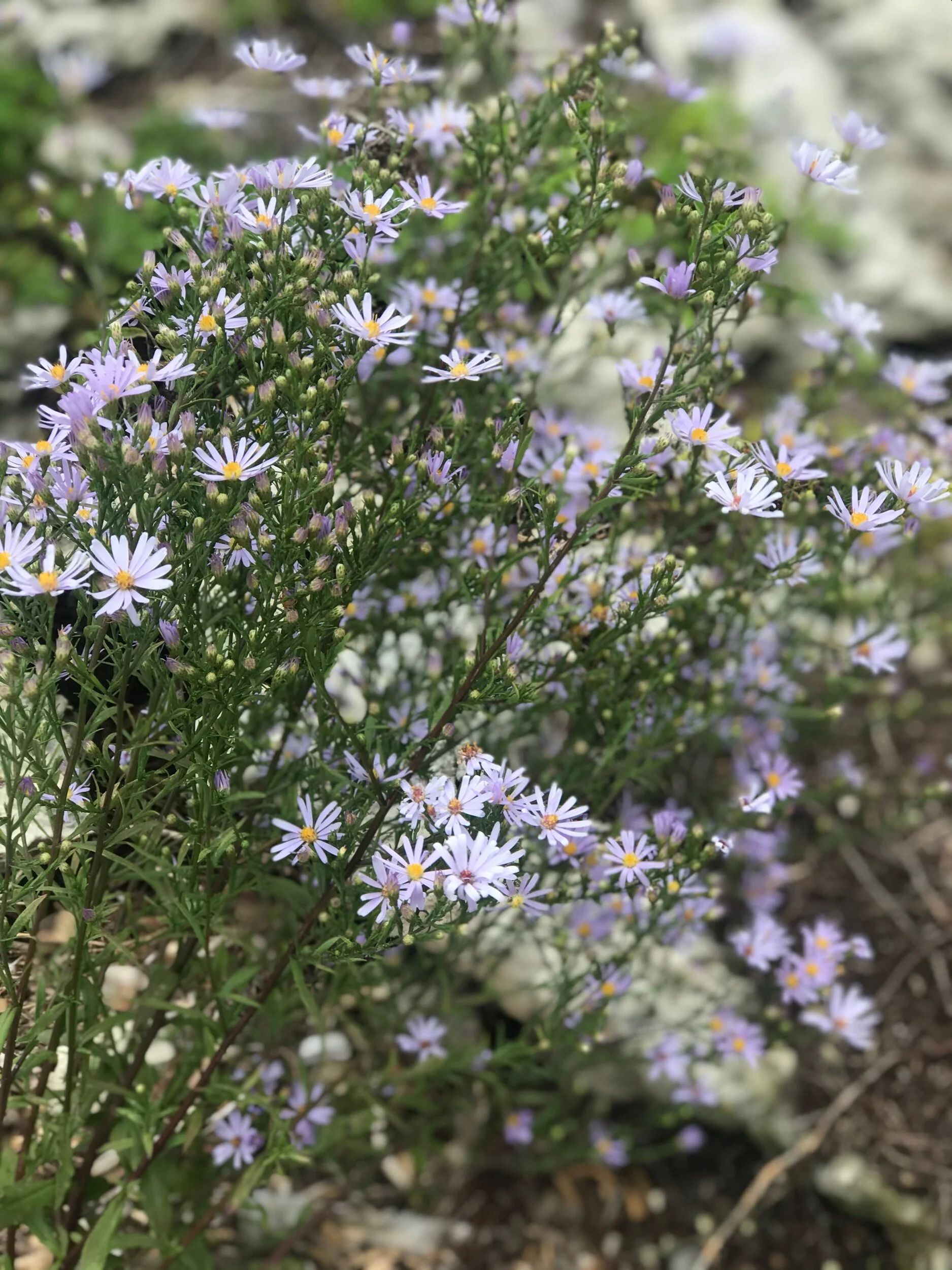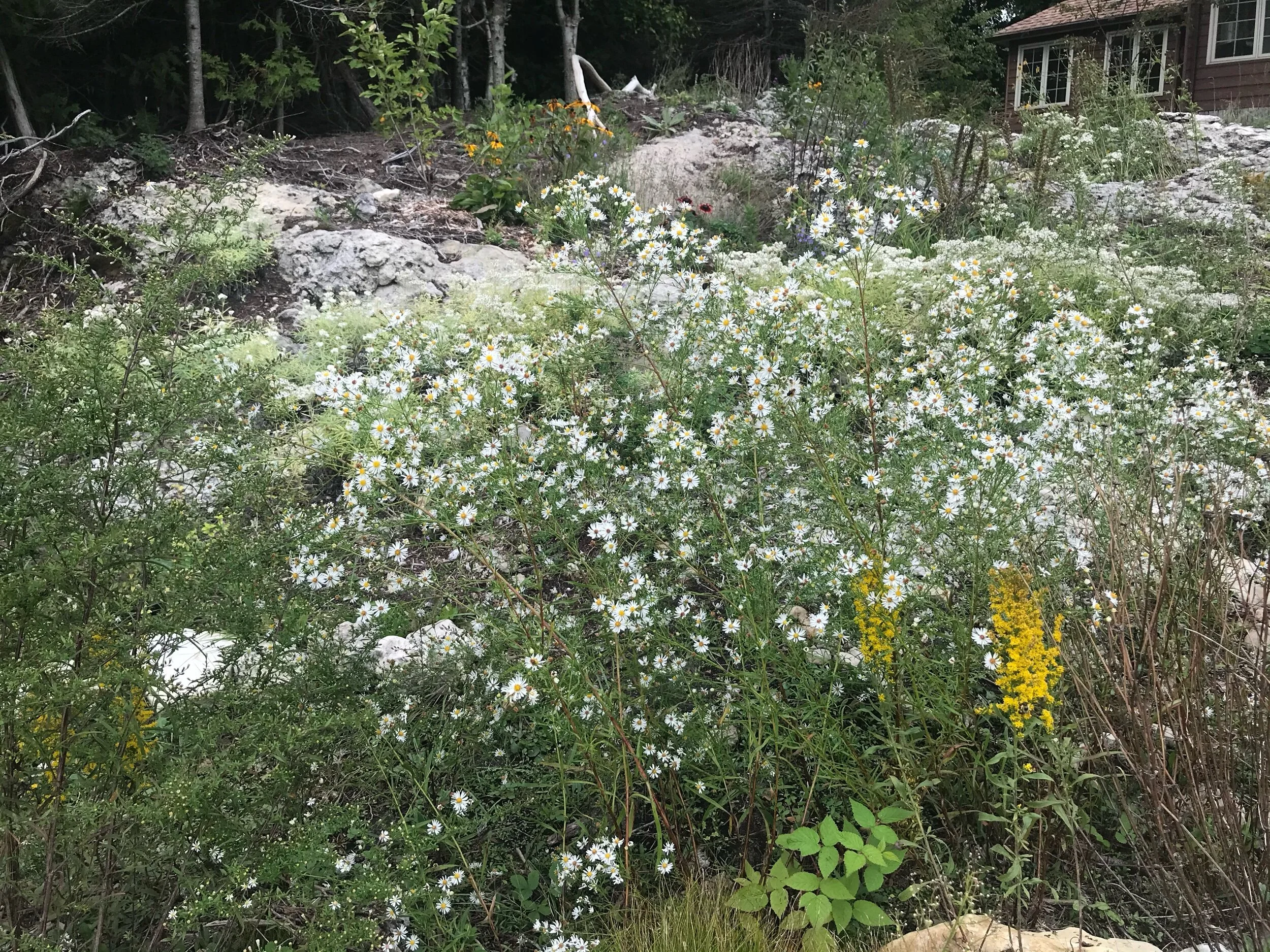Without a doubt this is the biggest transformation the property has seen to date. It was a huge undertaking that removed a major section of cedars and while it was a difficult thing to do that changed the landscape, it benefited the garden in a number of ways. Rest assured there is no shortage of trees remaining and the reality was that this section of trees that were removed had become unmanageable for the limited time spent here. They were encroaching on the house and snuffing out the view and having grown so dense they could barely be reached to trim.
We didn’t set out to remove such a large portion of trees but as one cedar was removed it was clear that the dead growth that exposed the removal would never recover. What we discovered along the way was that we were uncovering granite and limestone that we had no idea existed. The beauty of was shocking and we wanted to see more.
Here you can see in year one, starting clockwise from the top left, the progression of the original cedars that were there; after tree removal; after the stump removal and the gradual reestablishment in the spring and summer of year two. After I cleared a lot of remaining root growth what I ended up with is the most fertile soil I’ve ever worked with. Years of cedar shedding and decomposing created untouched soil that didn’t need amendment.
I planted wildflower plugs in the first year early in the spring and they all flowered and established without much watering, however it was very wet spring which I’m sure helped. Also planted were multi-stem serviberries to add vertical punctuation. Besides this relatively small amount of planting, the majority of the work went in to monitoring seed that was independently establishing and removing anything undesireable. The last thing I wanted was thistle, grape vine, poison ivy or stag horn sumac taking over - all of which tried their best.
Above in year one: hoary vervain, pearly everlasting, yarrow are all plants that I added that are native to the island. The sweet pea that was already there really took off now that it had all the room to move. This was all a testament to working with nature and not competing with it.
Below in year two, spring was shocking. I knew that the columbine and forget me nots were coming but I had no idea how many or how amazing it would be. We could now see the early migrating hummingbirds come by regularly and we could see so many birds snacking on bugs that we didn’t see before.
Early summer saw an actual sea of oxe eye daisies show up as the sweet peas started to bloom. As summer pushed on the liatris tapered off but the vervain and coneflower kept on giving. Then just in time for fall, the asters exploded and kept blooming and blooming for over a month. At all times there were dozens of bees of multiple varieties clinging to them doing their thing, so I added more native varieties because late pollinator friendly plants are essential.
This garden has been eye opening regarding the type of maintenance that is at the core of the land management I practice here. The rock garden is still in it’s early days of establishment with a lot of bare ground remaining that will establish and I can’t wait to see what happens next year.

